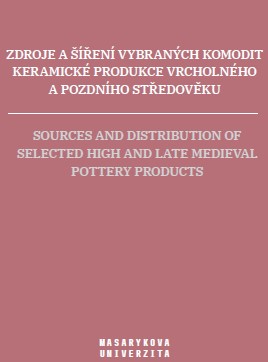Reliéfní dlaždice
Relief floor tiles
Author(s): Martin Hložek, Petr Holub
Subject(s): Archaeology, Cultural history, Visual Arts, Local History / Microhistory, 15th Century, History of Art
Published by: Masarykova univerzita nakladatelství
Keywords: archeological excavations; relief-decorated floor tiles; Brno; 15th century; Královo Pole;
Summary/Abstract: Seen from the perspective of analytical methods, the relief-decorated floor tiles exhibit both common and different technological traits when compared to the stove tile production. This finding can be best demonstrated on the sets of floor tiles from Brno. A surprising characteristic of medieval floor tiles is a very low proportion of temper in the clay body, which makes it completely different from the raw materials used in the stove-making workshop whose waste was found in the Veselá Street. In terms of technology, floor tiles resemble more the bricks. We can thus suppose that this commodity has been produced by brick makers. The location of brickworks in the territory of Brno is well known from written sources and archaeological excavations (Holub–Anton 2020). The results of analyses help us localise the two main places of clay extraction. The majority of floor tiles are probably made from raw materials acquired from terraces above the rivers Svitava or Ponávka (1st and 2nd material groups). These materials are characterised by a low temper content. Clay has been extracted in places adjacent to the southern edge of the town walls and in suburban areas north and northeast of the medieval town core – the different character of these locations might have caused small differences between groups 1 and 2. It can be generally said that fluvial sediments based on transported loess were historically considered a raw material suitable for the production of building ceramics. This statement was proved e. g. in a medieval brickworks uncovered by archaeological excavations in Brno-Královo Pole (Holub–Merta–Zůbek 2006, 45). These sediments cannot be macroscopically distinguished from primary loess deposits, so they can be generally confused with each other.
Book: Zdroje a šíření vybraných komodit keramické produkce vrcholného a pozdního středověku
- Page Range: 373-392
- Page Count: 20
- Publication Year: 2021
- Language: English, Czech
- Content File-PDF

